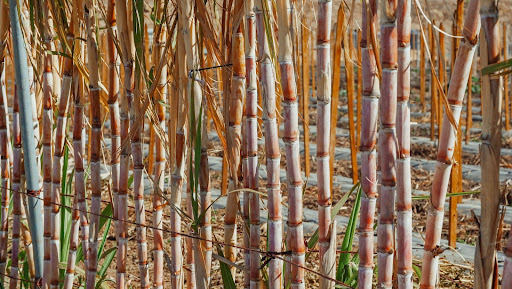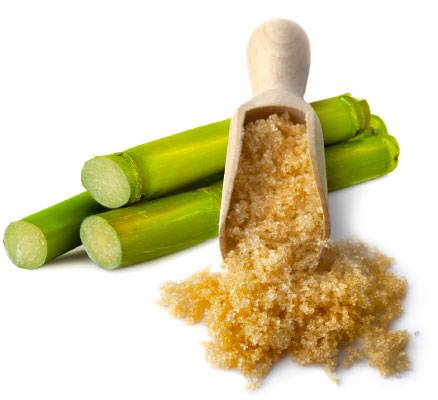The Journey of Cane Sugar Processing: From Harvest to Crystals
The Journey of Cane Sugar Processing: From Harvest to Crystals
Blog Article
A Comprehensive Guide to the Environmental Effect and Sustainability Practices in Walking Cane Sugar Processing
The ecological impact of walking stick sugar handling offers a complicated array of difficulties that warrant cautious evaluation. From dirt degradation and extreme water use to the carbon impact linked with cultivation and production, the repercussions of conventional methods are far-reaching. What certain techniques can be executed to strike a balance in between performance and environmental stewardship?
Review of Cane Sugar Handling
Walking stick sugar handling involves a collection of systematic steps that change sugarcane into polished sugar. At first, gathered sugarcane is carried to processing centers, where it undertakes cleaning to get rid of dirt and debris. Following this, the walking cane is crushed to draw out juice, which is after that clarified by getting rid of contaminations via heating and the addition of lime.
The clarified juice goes through evaporation, where water is removed to focus the sugar material. This focused syrup is then crystallized through air conditioning, allowing sugar crystals to form. These crystals are separated from the staying syrup utilizing centrifugation, causing raw sugar. To accomplish refined sugar, the raw product undergoes more purification processes, which may consist of filtering system and cleaning to eliminate continuing to be impurities and color.
The final product is after that dried out and packaged for distribution. Throughout this whole process, maintaining effectiveness and quality control is necessary to guarantee the sugar fulfills sector requirements. Each step in walking stick sugar handling not only adds to the end product yet additionally has ramifications for resource usage and waste generation, setting the stage for discussions on sustainability and environmental influences connected with sugar production.
Environmental Challenges of Manufacturing
The manufacturing of walking cane sugar offers several significant environmental difficulties that warrant focus. One key issue is the considerable usage of agrochemicals, including chemicals and fertilizers, which can result in soil degradation, biodiversity loss, and contamination of local water resources. The drainage from sugarcane fields commonly brings these chemicals into nearby ecosystems, disrupting marine life and influencing the health and wellness of communities reliant on these water bodies.
Another obstacle is the high energy consumption connected with sugarcane handling. The boiling and refining stages require significant warm, primarily created by shedding fossil fuels, adding to greenhouse gas discharges. Additionally, the large acreage required for sugarcane farming can cause deforestation and environment damage, further aggravating environment change and harmful wildlife.
In addition, the labor methods in some areas increase ethical worries, as workers might deal with bad working conditions and insufficient incomes. This scenario usually continues a cycle of destitution in regional areas. Cane Sugar Processing. Attending to these ecological difficulties is critical for establishing extra sustainable methods in cane sugar production, inevitably benefiting both the atmosphere and the areas involved in this sector
Water and Land Usage Impact
Water sources and land application are vital parts in the cane sugar market that dramatically impact the atmosphere. The growing of sugarcane calls for substantial water input, with quotes suggesting that it can eat up to 2,000 liters of water per kg of sugar created. This extensive use water frequently brings about depletion of local water resources, impacting not just the sugarcane haciendas yet also surrounding environments and areas that count on the same water sources for agriculture and domestic use.

In addition, land use for sugarcane farming can result in logging and the conversion of natural environments right into monoculture ranches. This technique decreases biodiversity, interferes with local ecological communities, and contributes to dirt degradation. The growth of sugarcane areas frequently intrudes on valuable agricultural land, developing competition for resources in between food and biofuel production.
Sustainable techniques, such as optimizing irrigation strategies and implementing crop rotation, are crucial to reduce these effects. By adopting much more effective water use and land management methods, the walking cane sugar industry can decrease its environmental impact, ensuring a balance in between farming performance and environmental preservation.
Greenhouse Gas Emissions
Greenhouse gas discharges stand for a substantial ecological concern within the walking stick sugar handling sector, particularly as agricultural practices broaden to satisfy worldwide need. The cultivation of sugarcane, a crop that flourishes in tropical climates, depends greatly on artificial plant foods and chemicals, which add to laughing gas emissions. Additionally, land-use changes, including deforestation for new sugarcane plantations, launch co2 saved in plants and dirt.
During processing, power intake is one more major source of greenhouse gas emissions - Cane Sugar Processing. Several sugar mills make use of fossil gas to power machinery and generate warmth, causing substantial carbon impacts. In addition, the transport of raw sugarcane and completed products includes layers of exhausts with fuel burning in cars
The cumulative effect of these exhausts exacerbates climate adjustment, presenting risks not just to the environment yet likewise to the lasting feasibility of the industry. Stakeholders have to recognize the immediate need for thorough techniques that resolve these discharges. This entails assessing existing agricultural techniques, processing techniques, and transportation systems to determine Cane Sugar Processing locations for enhancement and reduction. Dealing with greenhouse gas exhausts is important for cultivating a more sustainable walking cane sugar industry in a transforming climate.

Sustainable Practices and Innovations
Lasting techniques and innovations are progressively essential in the walking stick sugar processing market as stakeholders look for to reduce ecological effects while keeping efficiency. One significant improvement is the implementation of incorporated crop administration, which optimizes source usage by integrating dirt management, parasite control, and crop turning techniques. This technique enhances yield while decreasing chemical inputs and preserving dirt health.
Additionally, the adoption of renewable resource sources, such as biomass from sugarcane residues, has actually gained traction - Cane Sugar Processing. By transforming waste products into power, refining facilities can decrease their dependence on fossil fuels, thus lowering greenhouse gas discharges
Water monitoring practices have likewise seen renovations through the recycling and reusing of water in processing plants, dramatically reducing freshwater usage. Advancements in modern technology, such as precision agriculture, allow farmers to keep an eye on plant wellness and resource usage much more successfully, making certain lasting cultivation practices.
Additionally, accreditation programs like Fair Profession and Rain forest Partnership urge eco liable farming techniques and advertise social equity within the supply chain. By welcoming these lasting practices and innovations, the cane sugar processing industry can enhance its resilience and add favorably to ecological stewardship.
Verdict
The ecological influence of walking cane my company sugar handling provides considerable difficulties, including soil degradation, high water intake, and greenhouse gas exhausts, along with moral worries associated with labor methods. Dealing with these issues through lasting techniques, such as incorporated crop management, renewable resource fostering, and water recycling, is necessary. By promoting environmentally responsible and socially fair approaches in sugar manufacturing, the market can mitigate its adverse results, guaranteeing a more lasting future for both ecological communities and neighborhoods entailed in this field.
Walking stick sugar processing entails a series of organized actions that transform sugarcane into polished sugar. Each step in walking pop over here cane sugar processing not only adds to the final item however also has ramifications for resource usage and waste generation, setting the phase for discussions on sustainability and ecological effects associated with sugar manufacturing.
Greenhouse gas discharges stand for a substantial environmental problem within the walking cane sugar processing industry, especially as agricultural methods increase to fulfill global need.Lasting methods and technologies are progressively essential in the cane sugar handling sector as stakeholders seek to minimize ecological impacts while preserving performance.The environmental effect of walking cane sugar processing provides substantial challenges, including dirt destruction, high water intake, and greenhouse gas emissions, together with moral problems related to labor methods.
Report this page